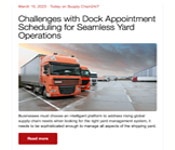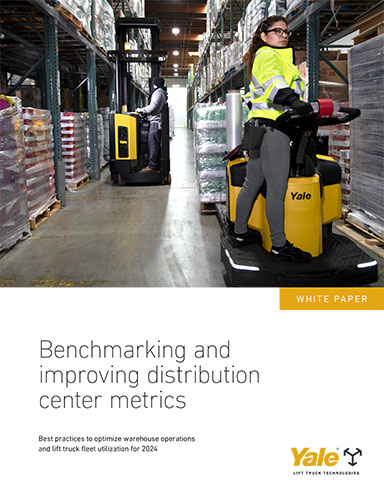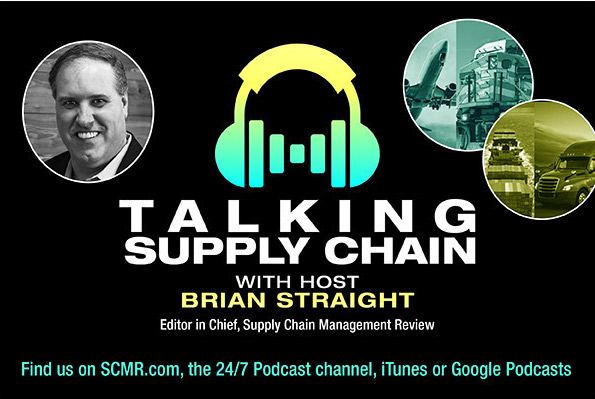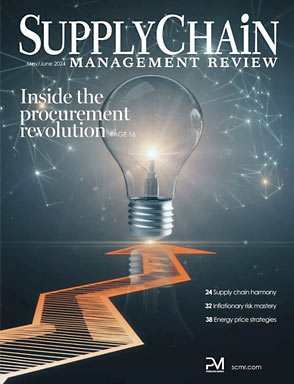By Abdil Tunca, senior principal analyst, Gartner
Logistics leaders continue to grapple with managing warehouse labor costs as availability remains tight, demand for new types of skilled labor increases and automation workflows remain mostly incomplete. Adding to the cost challenge is a highly uncertain outlook amid heightened trade volatility and its potential for downstream impacts on customer demand.
In response, Gartner has pinpointed three strategies for logistics leaders aimed at enhancing labor cost efficiency within warehouses. These strategies are designed to help leaders “control the controllables,” even amid a highly volatile external environment.
A prevalent absence of a performance-driven culture often leads to inefficiencies, diminished productivity, and suboptimal use of labor resources, collectively inflating logistics expenses. Furthermore, inadequately designed warehouse layouts and unnecessary activities contribute to underutilization of space and labor, leaving essential resources dormant and hindering the warehouse’s capacity to fulfill customer demands.
Additionally, many warehouses persist in relying heavily on manual labor, lacking a comprehensive automation strategy. This absence of a unified approach to warehouse automation can exacerbate costs through inefficiencies and missed opportunities for optimization.
To address these challenges, logistics leaders can focus on the following strategies:
Strategy 1: Empower your workforce
Empowering employees to achieve peak productivity is essential for competitiveness. A well-trained and motivated workforce is indispensable for efficiency, accuracy, and adaptability. Investing in employee training and fostering a performance-driven culture through incentives enhances morale and reduces turnover, along with associated hiring costs.
Clear expectations and measurable goals can bolster engagement, while regular feedback and performance reviews help employees recognize contributions and growth areas. Complementing KPIs with fair and attainable incentives fosters pride and accomplishment, preventing resentment.
Gartner research highlights autonomy, capability, and connection as key motivators. Policies catering to these needs maximize workforce value. Consistent feedback enhances responsibility, allowing autonomous work. Training and incentives enable continuous improvement and customer satisfaction, creating a culture of sustained motivation and retention.
Positioning the warehouse as a hub of operational excellence improves employee capabilities, leading to consistent and predictable results. This predictability boosts productivity and accuracy, efficiently managing costs. A positive reputation for investing in employees attracts top talent and sustains capable staff retention.
Creating a positive work environment is vital for employee satisfaction and labor cost optimization. Given the physically demanding nature of warehouse tasks, prioritizing well-being, safety, and engagement empowers the workforce and enhances performance.
Strategy 2: Improve resource utilization
Enhancing warehouse processes to fully utilize resources involves understanding various labor models, optimizing layouts, eliminating waste, and excelling in labor planning.
Labor models define how employees are assigned and managed to boost productivity.
- Fixed labor assigns specific roles, ensuring specialization but limiting flexibility.
- Cross-trained labor adapts to fluctuating order volumes by training employees in multiple roles.
- Dynamic labor uses real-time data for allocation, supported by technologies like warehouse management systems.
- On-demand labor addresses seasonal peaks but incurs higher costs.
Understanding how and when each model should be utilized based on the demand profile of the business (and how this demand could be impacted in the future) is a critical step to improving labor planning and efficiency.
Efficient resource use starts with optimizing warehouse layouts through systematic data collection and analysis. This process aims to reduce labor costs by ensuring efficient workflows.
Identifying and eliminating downtime and waste requires a structured approach. Tools like value stream mapping help pinpoint non-value-adding activities. Also, effective labor planning ensures the right number of skilled employees are scheduled to meet demands. Moving forward:
- Address causes of downtime through preventive maintenance, training, and scheduling improvements.
- Implement LEAN methodologies to streamline workflows and reduce inefficiencies.
- Utilize technology and data analysis for accurate forecasting.
- Define roles and required skills, prepare flexible schedules, engage employees, standardize workflows, and regularly measure KPIs to refine strategies. Proper planning prevents overstaffing and costly overtime, optimizing labor costs.
By aligning labor resources with operational demands, businesses can avoid unnecessary wage expenses and enhance productivity.
Strategy 3: Develop a robust automation strategy
Labor costs are a significant expense in warehouse management, and automation offers a pathway to optimize resource utilization while minimizing workforce-related expenditures. By reducing reliance on manual labor and enhancing operational efficiency, warehouse automation becomes a key factor in labor cost optimization. With many automation options available, it is insufficient to rely solely on bottom-up warehouse automation decisions from operational teams. You must create a top-down vision to successfully support your automation strategy.
To determine where automation can add value, start by assessing and breaking down labor costs to identify key drivers. Look for inefficiencies, bottlenecks, and repetitive tasks prone to human error, such as transportation of goods, picking, sorting, packing, and storage.
Evaluate automation solutions that can address these bottlenecks and estimate potential savings. Compare projected cost savings with the investment required for automation over time. If automation delivers the desired business value with a feasible solution, proceed with implementation. Otherwise, focus on improving people and processes.
Selecting the right automation solution is crucial, but as businesses and processes change, so must the automation strategies. For instance, many automation systems designed for B2B operations had to adapt to B2C demands during the COVID-19 pandemic.
To maintain labor savings, organizations should establish KPIs, such as equipment utilization rate and cost per case, to ensure continuous benefits. Utilize real-time monitoring tools to track automation efficiency and conduct regular audits to evaluate effectiveness and identify bottlenecks. Maintaining a feedback loop with automation vendors can enhance the utilization of the solution.
By strategically implementing and adapting automation, warehouses can effectively manage labor costs and improve overall efficiency.
About the author
Abdil Tunca is a senior principal analyst in Gartner’s Logistics and Customer Fulfillment team. He focuses on advising logistics leaders in warehouse automation, robotics, planning, execution as well as building capabilities that improve the performance of their logistics function.
SC
MR


More Warehouse Operations
What's Related in Warehouse Operations

 Explore
Explore
Topics
Business Management News
- C.H. Robinson rolls out AI agent to address LTL classification overhaul
- Danone latest to announce new US investment
- From flight decks to fulfillment: A veteran’s supply chain journey
- Employee versus enterprise AI adoption
- Uber Freight’s Val Marchevsky to deliver Keynote at NextGen Supply Chain Conference
- Unlocking the green grid: Innovations for eco-friendly last mile
- More Business Management
Latest Business Management Resources

Subscribe

Supply Chain Management Review delivers the best industry content.

Editors’ Picks




